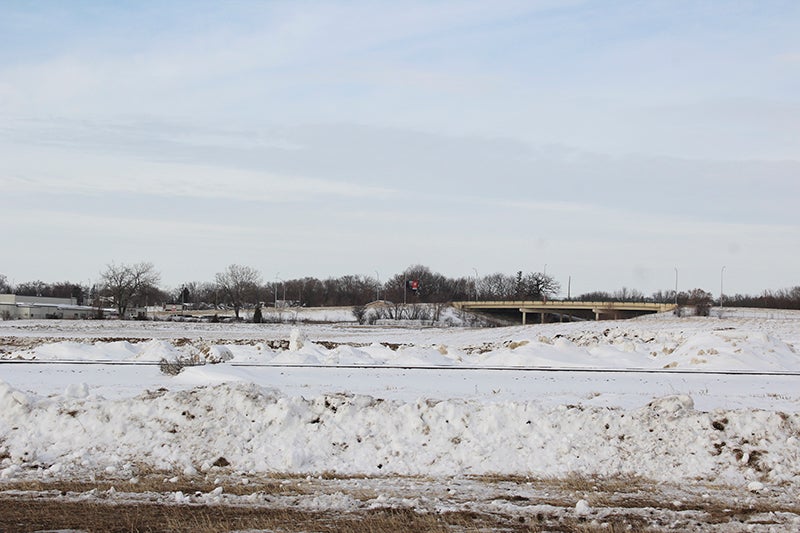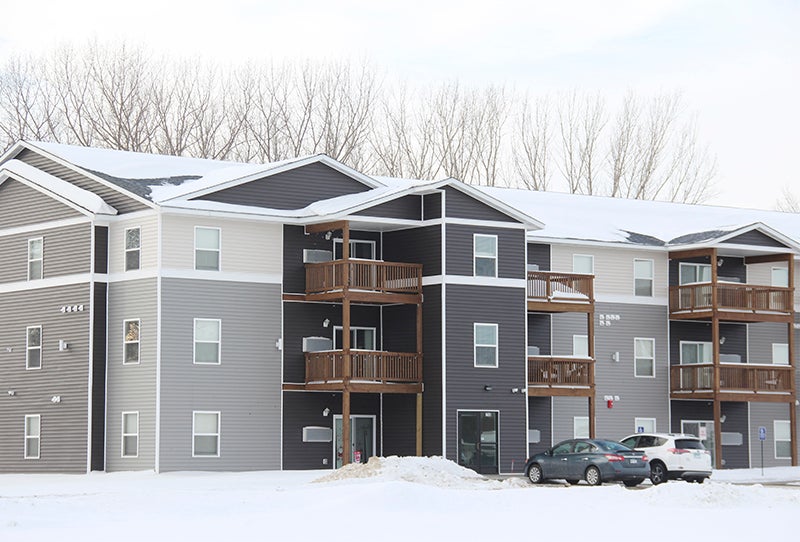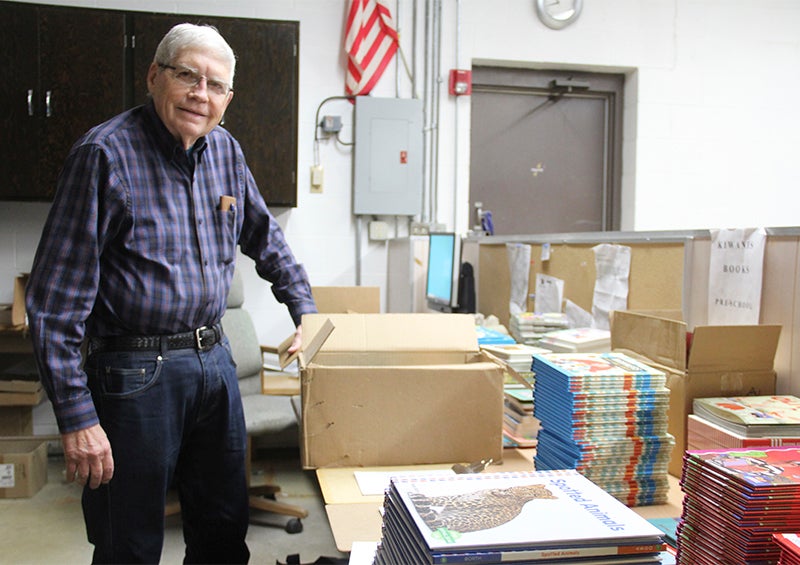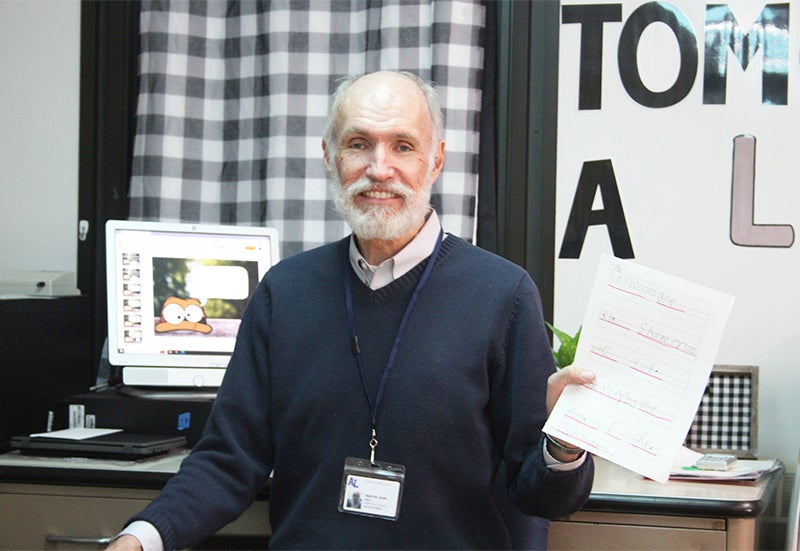‘There is still opportunity there’: City conducting soil testing at Blazing Star Landing to determine possibilities
Published 1:00 pm Monday, February 27, 2023
|
Getting your Trinity Audio player ready...
|
Albert Lea economic development leaders are hopeful soil testing done at the former Farmland Foods site this year and last will answer questions about the property and jumpstart development there after the land has sat unused for more than two decades.
Albert Lea City Manager Ian Rigg said for many years there has been the impression that there were only “a few problem spots” at the site from contamination left over from the former owner, but the full extent of that contamination had not been determined. He said those details are critical to know for construction purposes and the planning of where certain types of development will be placed.
Rigg said it is known that the former Wilson & Co. plant buried fly ash straight into the ground, and he noted that during soil testing and cleanup on the land south of the railroad tracks — where new apartments owned by Unique Opportunities LLC opened last year — crews pulled out barrels of unknown toxic chemicals that had been buried.
The soil in that part of the property tested positive for arsenic and underwent an extensive cleanup process before the apartments could be built, which involved not only city contribution but also funding from the state.
“I think some people assumed, ‘Well you could easily fix it,’ but costs have also gone up,” Rigg said. “It has to be a more thought-out and careful approach because of how expensive construction is.”
The city before November had conducted one round of vapor testing on the more than 30-acre site north of the railroad tracks and in late December and early January had planned to conduct another sampling of the soil conditions, including testing for arsenic, petroleum and other substances. They hope to determine the prevalence of the contamination, as well as the depth concentration to figure out what kind of cleanup needs to occur, what kind of foundations need to be built on buildings going up on the property — which is now known as the Blazing Star Landing — and what the more economical solution is to resolving the issue.
“Would it be better to put commercial here, housing? Can you put basements in, can you not? We’re going to get all those answers once they get done with the testing,” Rigg said.
He said the city has been contacted by developers looking into senior housing on the site, as well as market-rate and low-rate apartments, a series of small commercial sites and a grocery store. He classified the opportunities as regional or national developers.
“I think it’s a good general location for certain things,” Rigg said. “A goal of mine would be to try and get a grocery store there — a more centrally located one. I think that’s really vital for people that have limited transportation options.”
After the results of the testing are complete, he said they plan to go back to the developers who have shown interest and talk to them about those results and what the developers’ interests are.
“Their input and level of engagement will tell us the likelihood of getting that type of development in that spot,” Rigg said.
From there the city will divide the 25 to 30 acres of usable land north of the tracks into subcategories for retail, housing and other types of development, as well as figure out utilities.
Then they will begin properly advertising the property. The city manager said it will be considered shovel ready and information will be available about the soils to provide to businesses. They will also know remediation costs so they can figure out incentive packages to offer and whether they need to go to the state to request more funding.
“There is still opportunity there,” said Albert Lea Economic Development Agency Executive Director Phillip Johnson. “You’re looking at undeveloped land in the middle of a city center.”
Johnson said the information about the soil is vital to have when talking to developers. He said most of them have five- to 10-year timelines.
“You have to fit in that timeline in order to be a viable area,” he said.
Both men acknowledged the previous plans that had been conducted by the city and community for the land, some of which included moving East Front Street north, attracting a hotel and convention center, and collaborating on a community center, previously estimated at $25 million to $30 million, which would now likely be upwards of $60 million.
Plans are complicated now by the fact that the city needs to get $60 million for upgrades at its wastewater treatment plant. Rigg said though they would still like the community center, at this point he would rather get state funding for the sewer plant to complete that project and keep people’s sewer rates down.
Johnson said though everyone would love a community center or something that brings the same opportunities, the focus now is to shift it into the private market.
“If we can continue to grow development in the area … once we get those developments moving there and get people from a traffic perspective there, then it will become more of a place just like the north side of town or the downtown or even South Broadway where people are coming to now, that is going to affect and attract more traffic, which in turn affects and attracts more development,” he said.
Rigg said the newly constructed apartments show that it is possible to build on the property and also that the need exists for more housing. He said within three to six weeks of opening, the complex had all of its market rate units rented.
“They proved essentially the studies we’re looking at,” Johnson said.
The owner is in talks with the city about additional phases.
“What happened with Unique is that … it showed a lot of people we can do a lot more than what has been done and we should not doubt the idea it can get developed and built, but it is going to take effort and planning, and it is going to take a little bit of time, too,” Rigg said.
He said it is a shame the prior owners of the property treated the land the way it did, particularly being so close to Albert Lea Lake. He also noted the importance of following regulations, which are put in place to protect from problems like this years down the line.
“The property has its challenges, but now that we understand or are getting an understanding of the property, we can address those challenges and hopefully create opportunities,” Johnson said.







